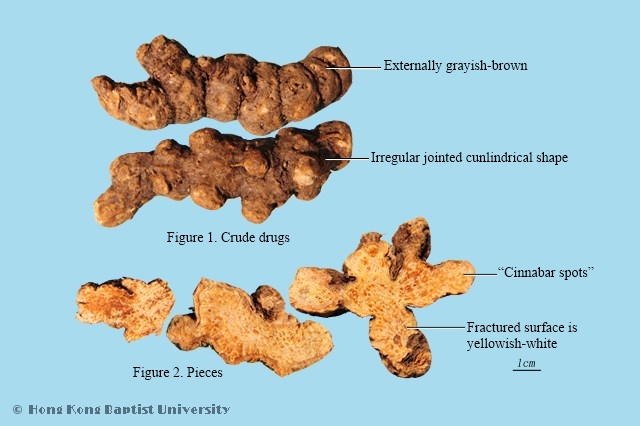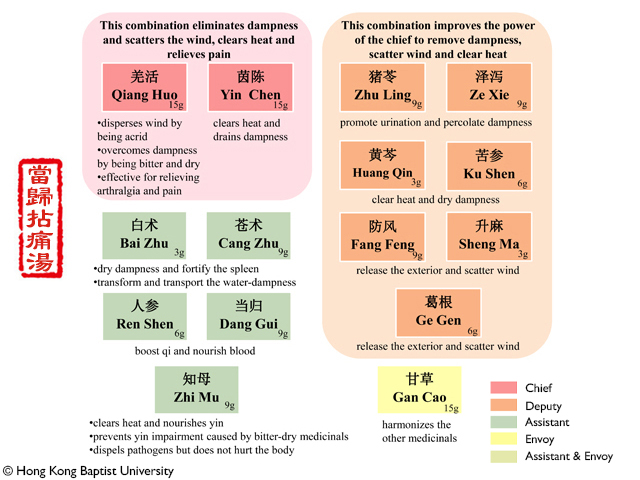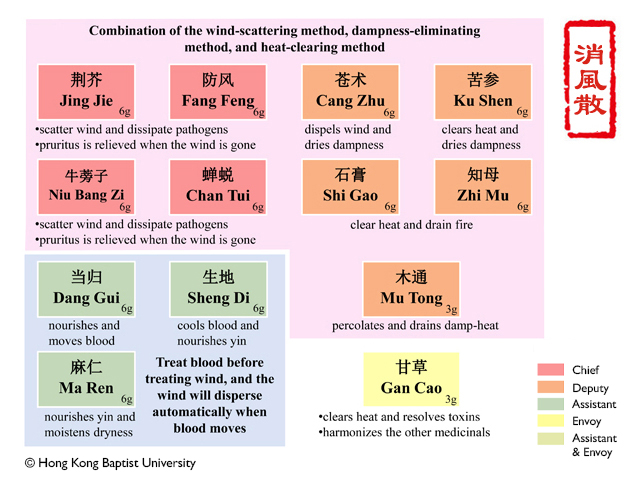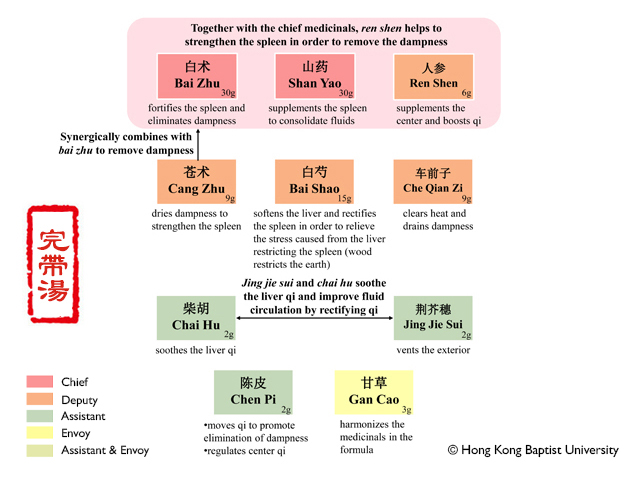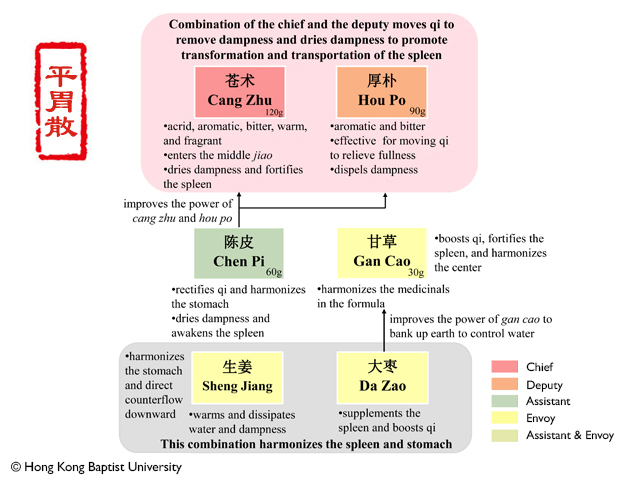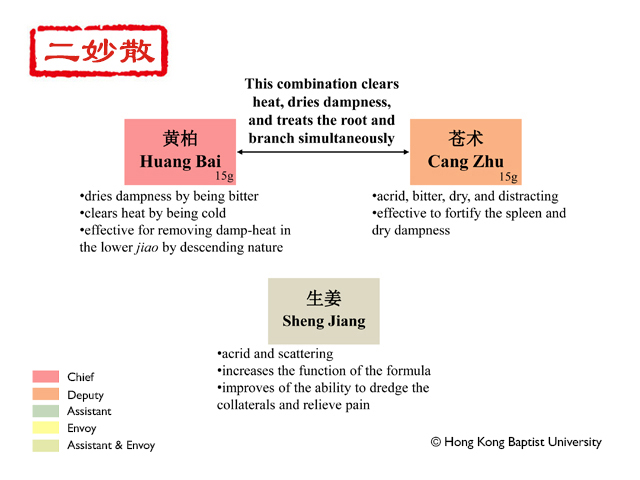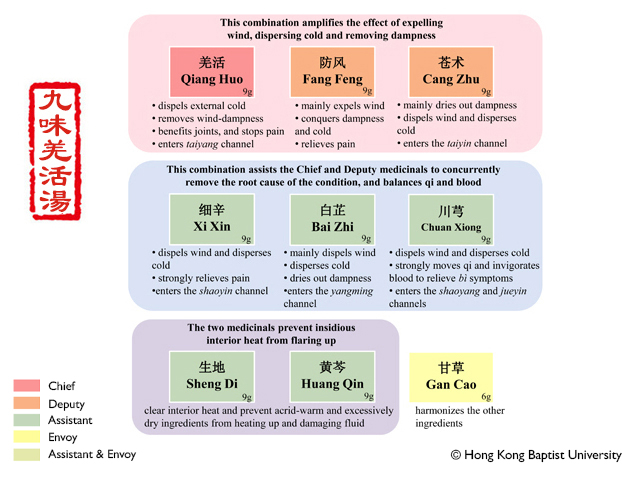Stomach-Calming Powder
Action:Dries dampness and activates the spleen, moves qi and harmonizes the stomach.
Indication:This is a pattern caused by dampness accumulation in the spleen and stomach. Spleen pertains to the earth of taiyin, is localized in middle jiao, and governs transportation and transformation. It is adverse to humidity and prefers dryness. When dampness accumulation blocks the middle jiao, the result is failure of transportation and transformation marked by abdominal distension and fullness, poor appetite and tastelessness. Additionally, the stomach qi might fail to descend. Counterflow of the stomach qi leads to nausea, vomiting, belching, and acid swallowing. Dampness is a yin pathogen that is heavy and lingering by its nature. Therefore, dampness accumulation in the body leads to heavy sensation in the limbs, lassitude, and somnolence. Dampness entering the intestine results in diarrhea. The therapeutic principles are to dry dampness and to activate the spleen as the primary function and move qi and harmonize the stomach as the secondary function. The ability to remove dampness is increased when qi moves smoothly.
